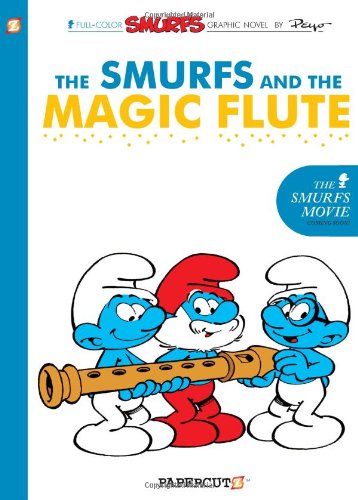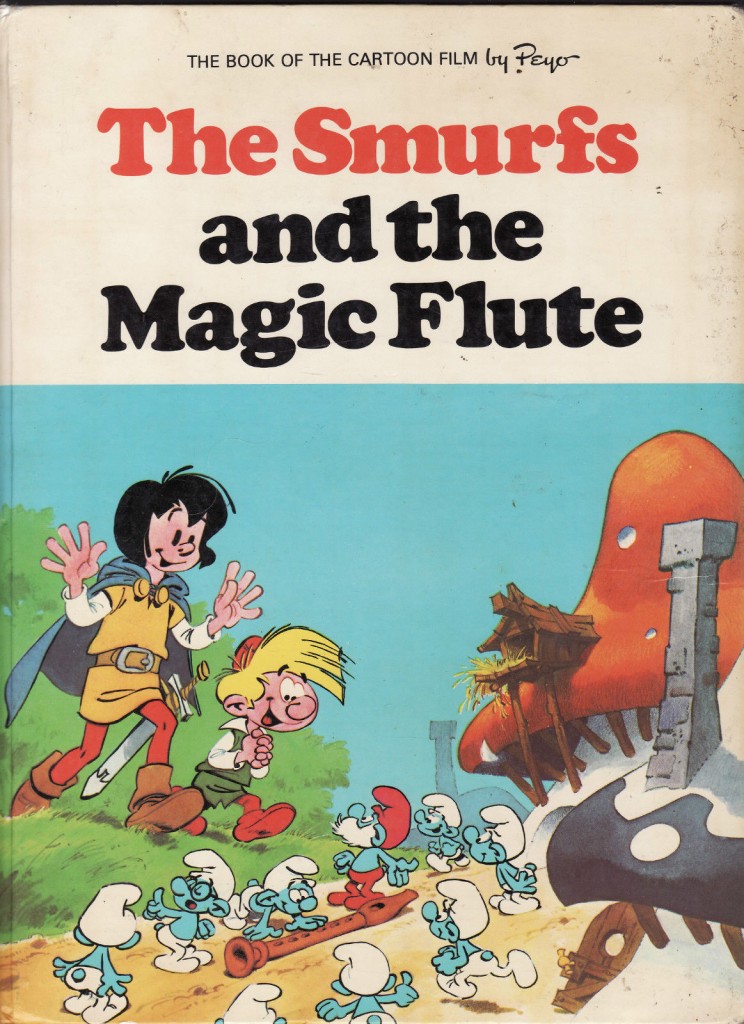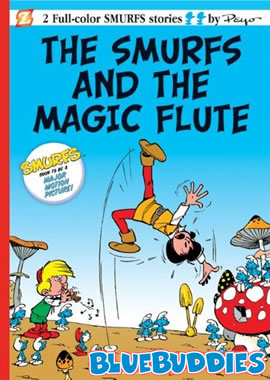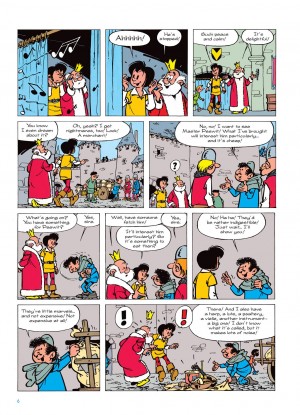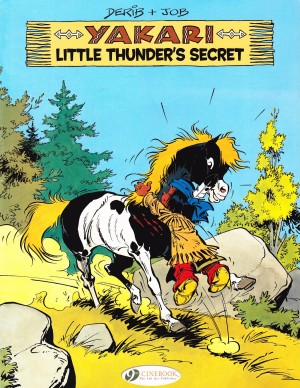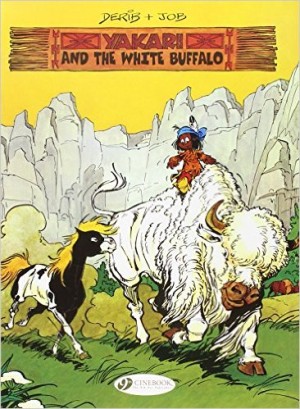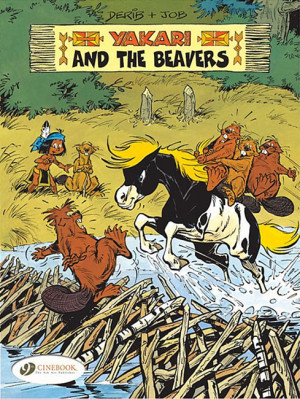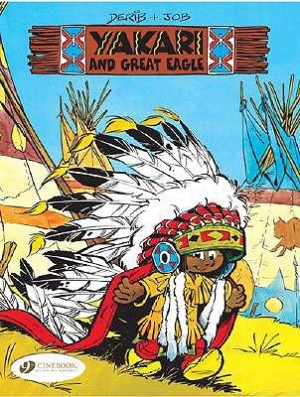Review by Frank Plowright
There’s some misdirection going on here with this story packaged as a Smurfs graphic novel. They do appear, and in fact it’s their first appearance, from 1958. Except this was in a series of albums ostensibly devoted to the medieval comedy adventures of Johan and Peewit, which is why not a Smurf is seen until halfway through the book.
What is seen throughout is Peyo’s artwork. Very soon after the Smurfs’ rapid rise to acclaim he developed a studio system, and from the early days left much of the illustration to his assistants, although the pages were still credited to him. This artwork is far busier than the world created for the Smurfs, with more expansive background detail, and the greater variety of characters results in a world of greater complexity than we’re used to seeing the Smurfs inhabit. In their solo adventures they’re alone in their world, and size isn’t an issue, so it’s also a novelty to see them as the small creatures they are compared to humans.
Johan is the trustworthy and upstanding page boy to a medieval king, and Peewit his younger and more mischievous assistant, and their adventures had already been serialised for six years before the first sighting of a Smurf. Peewit’s lack of musical talent is irritating the entire castle when he comes into possession of the title’s magic flute. Whenever he plays it people in the vicinity are compelled to dance, and if he plays long enough they’ll dance themselves unconscious. It’s not in Peewit’s possession for long, and while some might be grateful, the disappearance is indicative of a larger problem.
It’s while on the trail of the flute that Johan and Peewit first meet the Smurfs, although the readers have seen a few tiny blue hands already. Much is made of their frequent use of the word ‘Smurf’, the ensuing confusion possibly delighting children at the cost of wearing down the adults who have to read it to them. The plot’s tension is perpetuated by quests punctuated by slapstick gags, but they’re very professionally crafted, and attractively drawn, and should still appeal to children today.
This was one of several Smurfs graphic novels first published in English in the mid-1970s with translations by Anthea Bell and Derek Hockridge, also responsible for the excellent Asterix English language editions.
Beyond this volume, the next half dozen Papercutz books release the Smurfs albums in their original publication order, with The Smurf King up next. This story can also be found in the first Smurfs Anthology.
